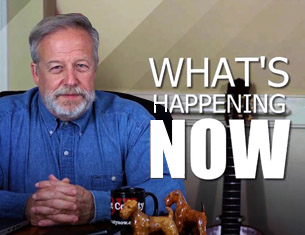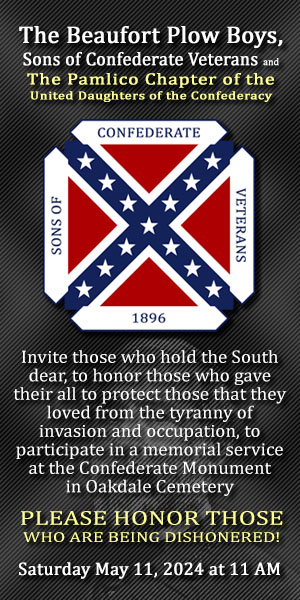A Constitutional Republic, where the First Amendment is Essential to OUR Survival
An Overview of the History and Meaning of the Second Amendment
Nevertheless, once the Constitution was signed, it went to the States, which, acting in their own conventions, would take up the issue of ratification. If they ratified the Constitution, they would become part of the Union of States and if they didn't, they would not. Delaware ratified first, by a unanimous vote. Then came Pennsylvania, New Jersey (unanimous vote), Georgia (unanimous vote), and Connecticut (overwhelmingly). In January 1788, Massachusetts called its convention. Samuel Adams, who, although he did not attend the Philadelphia Convention, attended the ratifying convention. Assessing the Constitution, he addressed the Convention:
"And that the said Constitution be never construed to authorize Congress to infringe the just liberty of the press, or the rights of conscience, or to prevent the people of the United States, who are peaceful citizens, from keeping their own arms, or to raise standing armies, unless necessary for the defense of the United States or of one or more of them, or to prevent the people from petitioning, in a peaceable and orderly manner, the federal legislature, for a redress of grievances, or to subject the people to unreasonable searches and seizures of their persons, papers, or possessions."
Samuel Adams is the strongest unsung hero of the Second Amendment. His writings on the right to have and bear arms goes back many years, even before his days in the Sons of Liberty.
Next, Maryland ratified the Constitution (overwhelmingly), then South Carolina, and finally New Hampshire (narrowly). When New Hampshire ratified in June 1788, it became the ninth state to do so. According to Article VII of the Constitution, the Constitution would go into effect when 9 states ratified. And so, the new Union was born.
But this new Union was still terribly fractured. Virginia, New York, North Carolina, and Rhode Island still hadn't decided. Actually, North Carolina met in Convention on August 2, 1788 but quickly rejected the Constitution (193-75). It agreed to meet again; it was waiting to see what the other States did regarding a Bill of Rights.
When New Hampshire ratified the Constitution on June 21, 1788, the Virginia Convention was actually still going on. It was contentious. Virginia, New York, and North Carolina were not expected to ratify, and the issue was over a Bill of Rights, which James Madison had argued in Philadelphia was not necessary. George Mason and Edmund Pendleton, two of the delegates from Virginia at the Philadelphia Convention who would not sign the Constitution, were now delegates at the Virginia Ratifying Convention and were committed to preventing the document from being ratified. These men, and many others, were already calling for another Constitutional Convention - particularly George Mason, and he had the potential power to move the plan forward. Mason and Pendleton were joined in sentiment at the Convention by Patrick Henry, who was highly skeptical of the Constitution and was confident it would lead to the consolidation of the states under the federal government.
At issue at the Virginia Ratifying Convention was essentially the concerns of the anti-Federalists, which was that the Constitution lacked a Bill of Rights (and that the government tended to be overly-ambitious and powerful). The Virginia view, in general, was that a Bill of Rights is the very least that a government owes to its people. Mason argued for a Bill of Rights, and of course, any Bill of Rights worth its salt would have to include a right to bear arms. Patrick Henry told the Convention: "The great object is that every man be armed!"
In the end, a compromise was reached. James Madison promised that if the Virginia delegation would ratify the Constitution in the Convention he would recommend to the first US Congress that a Bill of Rights be added, as a series of amendments. Madison was known to be a trustworthy man and so, the Constitution was narrowly ratified on June 25 (89-79). However, the Virginia delegation did not merely ratify; in anticipation of a national Bill of Rights, it also proposed and drafted a series of amendments for consideration.
"Resolved, that, previous to the ratification of the new Constitution of government recommended by the late federal Convention, a declaration of rights, asserting, and securing from encroachment, the great principles of civil and religious liberty, and the unalienable rights of the people, together with amendments to the most exceptionable parts of the said Constitution of government, ought to be referred by this Convention to the other states in the American confederacy for their consideration."
When the Virginia delegation went back to write the amendments they would recommend, they looked to the Massachusetts and the Pennsylvania models, in addition to their own model. The language that they came up with is as follows: "That the people have a right to keep and bear arms; that a well-regulated militia, composed of the body of the people, trained to arms, is the proper, natural, and safe defense of a free state."
The right to bear arms for defense of oneself and the State comes from the Pennsylvania model. The right to keep and bear arms comes from the Massachusetts model. By removing express limitations (such as "for the common good" or other qualifiers that might be later construed to limit the right ("for defense of themselves and the State"), the first part of the proposed amendment construes the right to arms in its broadest terms. The second part of the proposed amendment comes from the Virginia model and addresses the militia. The Virginia delegation already believed it was expressed in its broadest terms.
So, the Second Amendment actually articulates two separate thoughts and two separate rights, but both connected by the right to defense and self-defense. The intentional, conscious effort was to express the right to arms in the broadest terms possible, to be understood in its broadest sense.
The New York Convention followed. It wrapped up on July 26, one month after the Virginia Convention. It was another contentious convention. As in Virginia, it was a battle between anti-Federalists and Federalists. On the anti-Federalist side, the words of the Federal Farmer (possibly Richard Henry Lee) were invoked: "To preserve liberty, it is essential that the whole body of the people always possess arms and be taught how to use them." Daniel Webster, for the Federalists, answered: "Before a standing army can rule, the people must be disarmed, as they are in almost every kingdom in Europe. The supreme power in America cannot enforce unjust laws by the sword because the whole body of the people are armed and constitute a force superior to any band of regular troops that can be raised in the United States." [to paraphrase: Because of the fact that the people are armed and therefore superior to any troops raised by the United States, they can prevent the execution of any law they perceive not to be just and constitutional].
The debates in New York led to the most famous work on the meaning and intent of the Constitution - the Federalist Papers. In fact, Madison addresses the militia (and a standing army) in Federalist No. 46. He wrote: "The people will never have to worry about a standing army because of the state militias."
The New York Convention very narrowly ratified the Constitution (30-27). But as Virginia did, it called for a Bill of Rights and provided several for consideration. North Carolina went on to ratify, but only because a Bill of Rights has actually been adopted! And then Rhode Island ratified after that.
The Constitution was adopted on June 12, 1788 when the ninth state, New Hampshire ratified it. Fall 1788 saw the first national elections and as expected, James Madison was elected to the House of Representatives. In the months after the election and before taking his seat in Congress, which was in New York City at the time), Madison sat at his home in Montpelier and drafted a Bill of Rights. He drew from the proposed amendments that were submitted by the states. He planned to bring them with him to the first session of Congress and present them, thus making good on his promise. He drafted twelve amendments.
On June 8, 1789, Madison stood up in the House of Representatives and proposed what would become the federal Bill of Rights. His proposed Second Amendment read: "The right of the people to keep and bear arms shall not be infringed; a well-armed and well-regulated militia being the best security of a free country; but no person religiously scrupulous of bearing arms shall be compelled to render military service in person."
The first Congress amended Madison's proposal; it removed the language concerning the conscientious-objector. Then a committee was formed - a drafting committee - consisting of Madison himself and Roger Sherman, an anti-Federalist, to provide the final draft. The final draft of the Second Amendment was a pared-down version which read: "A well-regulated Militia, being necessary to the security of a free State, the right of the people to keep and bear Arms, shall not be infringed."
In the debates in the Senate on the proposed Bill of Rights, a motion was made to insert into the Second Amendment the words "for the common defense" next to the words "bear arms." It was rejected !!
On September 25, 1789, Congress approved the amendments (all 12 of them) and then they were sent to the states.
James Madison's friend, Tench Coxe, of Philadelphia, provided the most comprehensive analysis of the Second Amendment in a publication under the pen name "The Pennsylvanian." It was printed in all the states. He wrote: "As civil rulers, not having their duty to the people duly before them, may attempt to tyrannize, and as the military forces which might be occasionally called to defend our country, might pervert their power to the injury of their fellow citizens, the people are confirmed by the next article [the Second Amendment] in their right to keep and bear their private arms."
The Bill of Rights was ratified on December 15, 1791.
All the leading commentators of the day saw the right to bear arms as an individual right, including US Supreme Court Justice Joseph Story (1811-1845), who was the leading constitutional expert and commentator during the early-mid 20th century, Michigan Supreme Court Justice Thomas Cooley (1864-1885), the leading constitutional commentator at the end of the 19th century, and Sir William Blackstone, the leading English commentator who was very influential on our founders and framers.
St. George Tucker, who first gained fame as a Revolutionary War hero from Virginia, became famous again for writing a very famous treatise. In 1803, he wrote a 5-volume set, being characterized as the American version of Blackstone's "Commentaries." It was titled: Blackstone's Commentaries, with Notes of Reference to the Constitution & Laws of the Federal Government of the United States & of the Commonwealth of Virginia. Tucker was seen as the best source and authority on the original intent and early interpretation of the US Constitution until about 1825, and his work has been cited by the US Supreme Court over forty times. For those looking to understand the meaning and intent of the Constitution at the time it was adopted and as it served our first sessions of government, it would be interesting to read Tucker's volumes.
Tucker wrote about Blackstone's exposition on the right to arms as it existed in the English law and explained how it applied to the United States. Tucker wrote: "'The right of the people to keep and bear arms shall not be infringed.' This amendment is without any qualification as to their condition or degree, as in the case of the British government."
He went on to elaborate even further: Explaining the scope of the amendment, he wrote: "This [the Second Amendment] may be considered the true palladium of liberty... The right of the self-defense is the first law of nature; in most governments, it has been the study of rulers to confine this right within the narrowest limits possible. Wherever standing armies are kept up, and the right of the people to keep and bear arms is, under any color or pretext whatsoever, prohibited, then liberty, if not already annihilated, is on the brink of destruction."
In 1825, Tucker's treatise was replaced by the text written by William Rawle - A View of the Constitution of the United States of America. Regarding the Second Amendment, Rawle wrote in his book: "No clause in the Constitution could by any rule of construction be conceived to give to Congress a power to disarm the people.." [Rawle was part of the convention in Pennsylvania that ratified the US Bill of Rights; he was offered the position of first US Attorney General but turned it down].
The most influential constitutional commentator of the late 19th century and early 20th century was Thomas Cooley. He was considered the greatest legal mind of the time. He wrote the text: The General Principles of Constitutional Law in the United States of America. In his text, he explains exactly what the right is that is protected in the Second Amendment: "It may be supposed from the phraseology of this provision that the right to keep and bear arms was only guaranteed to the militia, but this would be an interpretation not warranted by the intent. The militia, as has been elsewhere explained, consists of those persons who, under the law, are liable to the performance of military duty, and are officered and enrolled for service when called upon. But the law may make provision for the enrollment of all who are fit to perform military duty, or of a small number only, or it may wholly omit to make any provision at all; and if the right were limited to those enrolled, the purpose of this guaranty might be defeated altogether by the actions or neglect to act of the government it was meant to hold in check. The meaning of the provision undoubtedly is that the people, from whom the militia must be taken, shall have the right to keep and bear arms, and that they need no permission or regulation of law for the purpose..."
Professor Randy Burnett of Boston University's School of Law sums up the history of the Second Amendment this way: "What is shown by the historical record is that we have statements made before the second amendment was proposed, while the second amendment was being considered, and immediately after the second amendment was ratified, each of which reflects the understanding of the speaker that the amendment protects an individual right to have and bear arms. What we don't have - what we don't find in the historical record is a single example of any contemporary at the time of the second amendment referring to it as anything other than an individual right."
Professor Eugene Volokh, of the UCLA School of Law, comments: "Throughout the 1700's, throughout the 1800's, and up until the early 1900's, the right to bear arms was universally seen as an individual right. There was virtually no authority for the collective rights/ states' right point of view." (States right to call a militia, that is).
But yet, in the late 20th century and now in the 21st century, somehow this history means nothing?
"The Second Amendment is a right held by States and does not protect the possession of a weapon by a private citizen." - The Court of Appeals for the 6th Circuit (2000)
"The right to keep and bear arms is meant solely to protect the right of the States to keep and maintain an armed militia." - The Court of Appeals for the 9th Circuit (1996)
The conservatives on the bench in the District of Columbia v. Heller case and then in the McDonald v. Chicago case got it right. They chose to be intellectually honest.
References:
DVD: "In Search of the Second Amendment (A Documentary)," produced and directed by David T. Hardy (2006). Second Amendment Films LLC
Diane Rufino, "Making Sense of the Meaning and Intent of the Second Amendment," May 24, 2017. Referenced from her blogsite: https://forloveofgodandcountry.com/2017/05/25/making-sense-of-the-meaning-and-intent-of-the-second-amendment-its-not-hard-folks/
United States v. Miller, 307 U.S. 174 (1939)
District of Columbia v. Heller, 554 U.S. 570 (2008)
McDonald v. Chicago, 561 US 742 (2010)
Resolutions of the Provincial Congress of Virginia (Patrick Henry) regarding the militia, March 23, 1775 - http://avalon.law.yale.edu/18th_century/res_cong_va_1775.asp
Don B. Kates, Jr. "Handgun Prohibition and the Original Meaning of the Second Amendment," 82 Michigan Law Review (MICH. L. REV.) 204-273 (1983). Referenced: http://www.constitution.org/2ll/2ndschol/57mich.pdf
George Mason, the Virginia Declaration of Rights. Referenced at: http://www.history.org/almanack/life/politics/varights.cfm
Virginia's Ratification of the Constitution, Elliott's Debates (June 25, 1788) - http://teachingamericanhistory.org/ratification/elliot/vol3/june25/
The proposed amendments to the Bill of Rights submitted by the State of Virginia (June 27, 1788) - http://teachingamericanhistory.org/ratification/elliot/vol3/june27/
Teaching American History (an Intereactive Resource) - http://teachingamericanhistory.org/ratification/overview/
Go Back
"And that the said Constitution be never construed to authorize Congress to infringe the just liberty of the press, or the rights of conscience, or to prevent the people of the United States, who are peaceful citizens, from keeping their own arms, or to raise standing armies, unless necessary for the defense of the United States or of one or more of them, or to prevent the people from petitioning, in a peaceable and orderly manner, the federal legislature, for a redress of grievances, or to subject the people to unreasonable searches and seizures of their persons, papers, or possessions."
Samuel Adams is the strongest unsung hero of the Second Amendment. His writings on the right to have and bear arms goes back many years, even before his days in the Sons of Liberty.
Next, Maryland ratified the Constitution (overwhelmingly), then South Carolina, and finally New Hampshire (narrowly). When New Hampshire ratified in June 1788, it became the ninth state to do so. According to Article VII of the Constitution, the Constitution would go into effect when 9 states ratified. And so, the new Union was born.
But this new Union was still terribly fractured. Virginia, New York, North Carolina, and Rhode Island still hadn't decided. Actually, North Carolina met in Convention on August 2, 1788 but quickly rejected the Constitution (193-75). It agreed to meet again; it was waiting to see what the other States did regarding a Bill of Rights.
When New Hampshire ratified the Constitution on June 21, 1788, the Virginia Convention was actually still going on. It was contentious. Virginia, New York, and North Carolina were not expected to ratify, and the issue was over a Bill of Rights, which James Madison had argued in Philadelphia was not necessary. George Mason and Edmund Pendleton, two of the delegates from Virginia at the Philadelphia Convention who would not sign the Constitution, were now delegates at the Virginia Ratifying Convention and were committed to preventing the document from being ratified. These men, and many others, were already calling for another Constitutional Convention - particularly George Mason, and he had the potential power to move the plan forward. Mason and Pendleton were joined in sentiment at the Convention by Patrick Henry, who was highly skeptical of the Constitution and was confident it would lead to the consolidation of the states under the federal government.
At issue at the Virginia Ratifying Convention was essentially the concerns of the anti-Federalists, which was that the Constitution lacked a Bill of Rights (and that the government tended to be overly-ambitious and powerful). The Virginia view, in general, was that a Bill of Rights is the very least that a government owes to its people. Mason argued for a Bill of Rights, and of course, any Bill of Rights worth its salt would have to include a right to bear arms. Patrick Henry told the Convention: "The great object is that every man be armed!"
In the end, a compromise was reached. James Madison promised that if the Virginia delegation would ratify the Constitution in the Convention he would recommend to the first US Congress that a Bill of Rights be added, as a series of amendments. Madison was known to be a trustworthy man and so, the Constitution was narrowly ratified on June 25 (89-79). However, the Virginia delegation did not merely ratify; in anticipation of a national Bill of Rights, it also proposed and drafted a series of amendments for consideration.
"Resolved, that, previous to the ratification of the new Constitution of government recommended by the late federal Convention, a declaration of rights, asserting, and securing from encroachment, the great principles of civil and religious liberty, and the unalienable rights of the people, together with amendments to the most exceptionable parts of the said Constitution of government, ought to be referred by this Convention to the other states in the American confederacy for their consideration."
When the Virginia delegation went back to write the amendments they would recommend, they looked to the Massachusetts and the Pennsylvania models, in addition to their own model. The language that they came up with is as follows: "That the people have a right to keep and bear arms; that a well-regulated militia, composed of the body of the people, trained to arms, is the proper, natural, and safe defense of a free state."
The right to bear arms for defense of oneself and the State comes from the Pennsylvania model. The right to keep and bear arms comes from the Massachusetts model. By removing express limitations (such as "for the common good" or other qualifiers that might be later construed to limit the right ("for defense of themselves and the State"), the first part of the proposed amendment construes the right to arms in its broadest terms. The second part of the proposed amendment comes from the Virginia model and addresses the militia. The Virginia delegation already believed it was expressed in its broadest terms.
So, the Second Amendment actually articulates two separate thoughts and two separate rights, but both connected by the right to defense and self-defense. The intentional, conscious effort was to express the right to arms in the broadest terms possible, to be understood in its broadest sense.
The New York Convention followed. It wrapped up on July 26, one month after the Virginia Convention. It was another contentious convention. As in Virginia, it was a battle between anti-Federalists and Federalists. On the anti-Federalist side, the words of the Federal Farmer (possibly Richard Henry Lee) were invoked: "To preserve liberty, it is essential that the whole body of the people always possess arms and be taught how to use them." Daniel Webster, for the Federalists, answered: "Before a standing army can rule, the people must be disarmed, as they are in almost every kingdom in Europe. The supreme power in America cannot enforce unjust laws by the sword because the whole body of the people are armed and constitute a force superior to any band of regular troops that can be raised in the United States." [to paraphrase: Because of the fact that the people are armed and therefore superior to any troops raised by the United States, they can prevent the execution of any law they perceive not to be just and constitutional].
The debates in New York led to the most famous work on the meaning and intent of the Constitution - the Federalist Papers. In fact, Madison addresses the militia (and a standing army) in Federalist No. 46. He wrote: "The people will never have to worry about a standing army because of the state militias."
The New York Convention very narrowly ratified the Constitution (30-27). But as Virginia did, it called for a Bill of Rights and provided several for consideration. North Carolina went on to ratify, but only because a Bill of Rights has actually been adopted! And then Rhode Island ratified after that.
The Constitution was adopted on June 12, 1788 when the ninth state, New Hampshire ratified it. Fall 1788 saw the first national elections and as expected, James Madison was elected to the House of Representatives. In the months after the election and before taking his seat in Congress, which was in New York City at the time), Madison sat at his home in Montpelier and drafted a Bill of Rights. He drew from the proposed amendments that were submitted by the states. He planned to bring them with him to the first session of Congress and present them, thus making good on his promise. He drafted twelve amendments.
On June 8, 1789, Madison stood up in the House of Representatives and proposed what would become the federal Bill of Rights. His proposed Second Amendment read: "The right of the people to keep and bear arms shall not be infringed; a well-armed and well-regulated militia being the best security of a free country; but no person religiously scrupulous of bearing arms shall be compelled to render military service in person."
The first Congress amended Madison's proposal; it removed the language concerning the conscientious-objector. Then a committee was formed - a drafting committee - consisting of Madison himself and Roger Sherman, an anti-Federalist, to provide the final draft. The final draft of the Second Amendment was a pared-down version which read: "A well-regulated Militia, being necessary to the security of a free State, the right of the people to keep and bear Arms, shall not be infringed."
In the debates in the Senate on the proposed Bill of Rights, a motion was made to insert into the Second Amendment the words "for the common defense" next to the words "bear arms." It was rejected !!
On September 25, 1789, Congress approved the amendments (all 12 of them) and then they were sent to the states.
James Madison's friend, Tench Coxe, of Philadelphia, provided the most comprehensive analysis of the Second Amendment in a publication under the pen name "The Pennsylvanian." It was printed in all the states. He wrote: "As civil rulers, not having their duty to the people duly before them, may attempt to tyrannize, and as the military forces which might be occasionally called to defend our country, might pervert their power to the injury of their fellow citizens, the people are confirmed by the next article [the Second Amendment] in their right to keep and bear their private arms."
The Bill of Rights was ratified on December 15, 1791.
All the leading commentators of the day saw the right to bear arms as an individual right, including US Supreme Court Justice Joseph Story (1811-1845), who was the leading constitutional expert and commentator during the early-mid 20th century, Michigan Supreme Court Justice Thomas Cooley (1864-1885), the leading constitutional commentator at the end of the 19th century, and Sir William Blackstone, the leading English commentator who was very influential on our founders and framers.
St. George Tucker, who first gained fame as a Revolutionary War hero from Virginia, became famous again for writing a very famous treatise. In 1803, he wrote a 5-volume set, being characterized as the American version of Blackstone's "Commentaries." It was titled: Blackstone's Commentaries, with Notes of Reference to the Constitution & Laws of the Federal Government of the United States & of the Commonwealth of Virginia. Tucker was seen as the best source and authority on the original intent and early interpretation of the US Constitution until about 1825, and his work has been cited by the US Supreme Court over forty times. For those looking to understand the meaning and intent of the Constitution at the time it was adopted and as it served our first sessions of government, it would be interesting to read Tucker's volumes.
Tucker wrote about Blackstone's exposition on the right to arms as it existed in the English law and explained how it applied to the United States. Tucker wrote: "'The right of the people to keep and bear arms shall not be infringed.' This amendment is without any qualification as to their condition or degree, as in the case of the British government."
He went on to elaborate even further: Explaining the scope of the amendment, he wrote: "This [the Second Amendment] may be considered the true palladium of liberty... The right of the self-defense is the first law of nature; in most governments, it has been the study of rulers to confine this right within the narrowest limits possible. Wherever standing armies are kept up, and the right of the people to keep and bear arms is, under any color or pretext whatsoever, prohibited, then liberty, if not already annihilated, is on the brink of destruction."
In 1825, Tucker's treatise was replaced by the text written by William Rawle - A View of the Constitution of the United States of America. Regarding the Second Amendment, Rawle wrote in his book: "No clause in the Constitution could by any rule of construction be conceived to give to Congress a power to disarm the people.." [Rawle was part of the convention in Pennsylvania that ratified the US Bill of Rights; he was offered the position of first US Attorney General but turned it down].
The most influential constitutional commentator of the late 19th century and early 20th century was Thomas Cooley. He was considered the greatest legal mind of the time. He wrote the text: The General Principles of Constitutional Law in the United States of America. In his text, he explains exactly what the right is that is protected in the Second Amendment: "It may be supposed from the phraseology of this provision that the right to keep and bear arms was only guaranteed to the militia, but this would be an interpretation not warranted by the intent. The militia, as has been elsewhere explained, consists of those persons who, under the law, are liable to the performance of military duty, and are officered and enrolled for service when called upon. But the law may make provision for the enrollment of all who are fit to perform military duty, or of a small number only, or it may wholly omit to make any provision at all; and if the right were limited to those enrolled, the purpose of this guaranty might be defeated altogether by the actions or neglect to act of the government it was meant to hold in check. The meaning of the provision undoubtedly is that the people, from whom the militia must be taken, shall have the right to keep and bear arms, and that they need no permission or regulation of law for the purpose..."
Professor Randy Burnett of Boston University's School of Law sums up the history of the Second Amendment this way: "What is shown by the historical record is that we have statements made before the second amendment was proposed, while the second amendment was being considered, and immediately after the second amendment was ratified, each of which reflects the understanding of the speaker that the amendment protects an individual right to have and bear arms. What we don't have - what we don't find in the historical record is a single example of any contemporary at the time of the second amendment referring to it as anything other than an individual right."
Professor Eugene Volokh, of the UCLA School of Law, comments: "Throughout the 1700's, throughout the 1800's, and up until the early 1900's, the right to bear arms was universally seen as an individual right. There was virtually no authority for the collective rights/ states' right point of view." (States right to call a militia, that is).
But yet, in the late 20th century and now in the 21st century, somehow this history means nothing?
"The Second Amendment is a right held by States and does not protect the possession of a weapon by a private citizen." - The Court of Appeals for the 6th Circuit (2000)
"The right to keep and bear arms is meant solely to protect the right of the States to keep and maintain an armed militia." - The Court of Appeals for the 9th Circuit (1996)
The conservatives on the bench in the District of Columbia v. Heller case and then in the McDonald v. Chicago case got it right. They chose to be intellectually honest.
References:
DVD: "In Search of the Second Amendment (A Documentary)," produced and directed by David T. Hardy (2006). Second Amendment Films LLC
Diane Rufino, "Making Sense of the Meaning and Intent of the Second Amendment," May 24, 2017. Referenced from her blogsite: https://forloveofgodandcountry.com/2017/05/25/making-sense-of-the-meaning-and-intent-of-the-second-amendment-its-not-hard-folks/
United States v. Miller, 307 U.S. 174 (1939)
District of Columbia v. Heller, 554 U.S. 570 (2008)
McDonald v. Chicago, 561 US 742 (2010)
Resolutions of the Provincial Congress of Virginia (Patrick Henry) regarding the militia, March 23, 1775 - http://avalon.law.yale.edu/18th_century/res_cong_va_1775.asp
Don B. Kates, Jr. "Handgun Prohibition and the Original Meaning of the Second Amendment," 82 Michigan Law Review (MICH. L. REV.) 204-273 (1983). Referenced: http://www.constitution.org/2ll/2ndschol/57mich.pdf
George Mason, the Virginia Declaration of Rights. Referenced at: http://www.history.org/almanack/life/politics/varights.cfm
Virginia's Ratification of the Constitution, Elliott's Debates (June 25, 1788) - http://teachingamericanhistory.org/ratification/elliot/vol3/june25/
The proposed amendments to the Bill of Rights submitted by the State of Virginia (June 27, 1788) - http://teachingamericanhistory.org/ratification/elliot/vol3/june27/
Teaching American History (an Intereactive Resource) - http://teachingamericanhistory.org/ratification/overview/
| newest uncovered Fauci atrocity killed children | Local News & Expression, Editorials, Our Founding Principles, For Love of God and Country, Op-Ed & Politics | Governor DeSantis on Biden |
























